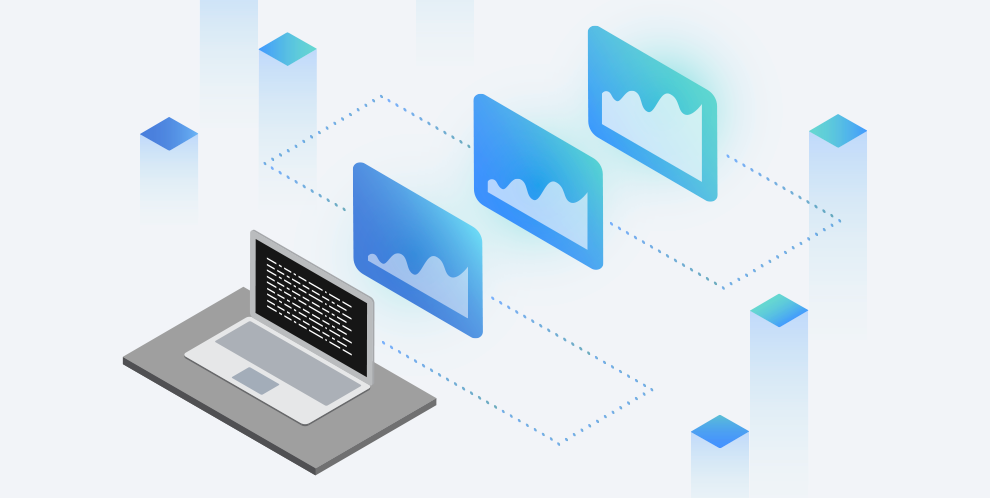Why applications should drive your IT investments

As business and IT leaders strive to optimize resources and reduce costs, it can be tempting to choose a single standard server to deploy for their entire organization. Commodity servers are perceived as low-cost and effective infrastructure, so it seems like a smart investment.
However, this temptation can yield the opposite results as intended.
Not only can it be expensive and time-consuming to migrate applications to a single standard server, but doing so can inadvertently introduce new issues, as different applications can have different infrastructure requirements. This is why it’s important to analyze an application’s total cost of ownership (TCO) before making this type of investment.
When all application requirements and data center costs are considered, commodity scale-out servers can actually drive up the total cost of IT spend and fail to deliver ROI. Meanwhile, after performing this analysis, the IBM Z® platform emerges as a superior infrastructure option for many applications.
Let’s look at offload assessments performed by IBM IT Economics that help you see how IBM Z can lower your IT infrastructure costs.
How the evolution of application lifecycle management impacts TCO
IT applications – and the business processes implemented within them – represent the real assets of modern organizations. This is why organizations still run applications that were originally deployed more than half a century ago.
But application lifecycle management (ALM) has changed over the years, and organizations have adopted new trends while maintaining already-deployed applications. This has created different layers of technologies, and application integration has become a crucial challenge for every organization.
Application development and maintenance requires significant resources. And, after a few years, the total cost of an application becomes much larger than the cost of the infrastructure it runs on.
How IBM Z can lower TCO and improve ROI
Many companies find that continuing to run their applications on IBM Z yields a lower TCO and higher ROI than new ALM techniques that promise a lower TCO for applications running on other systems.
Here’s an example: At the request of clients, IBM IT Economics performed TCO offload assessments involving rewrites of up to 10 million lines of application code. The assessment results included:
- Clients had—on average—a 2x lower annual TCO keeping their applications on IBM Z versus moving to an x86-based infrastructure[1]. This was mainly due to underestimating application migration costs, parallel environment maintenance period costs and the sizing of the equivalent x86 infrastructure once fully deployed.
- Offload projects ran beyond their planned completion date and budget as well as falling short of the project’s planned scope due to the complexity of migrating applications. Even in cases considered technically successful, analysis found that the project either faced a long ROI break-even point of 20 or more years, or none whatsoever.
The risks of long project duration and high cost tend to be why many companies avoid application migration and ultimately keep their applications running on IBM Z. But many also find cost savings through optimization of their IBM Z environment or by exploring new service provisioning models such as shared data centers or IBM Z cloud offerings.
Several characteristics of IBM z15™ enable solutions to meet the most challenging business requirements while minimizing IT costs.
- Seven-nines availability enables enterprises to efficiently deliver business-critical solutions with high availability.
- Data security and privacy through pervasive encryption and Data Privacy Passports
- Scalability with up to 190 cores per system and often with many systems clustered in Parallel Sysplex
These advancements, combined with investments made in IBM Z applications running in thousands of enterprises worldwide, have convinced many IBM Z clients to further enhance and expand their mainframe environments. Instead of replatforming their applications to another hardware architecture, you can applications and modules on IBM Z that extend the capabilities of their original applications.
Below are some additional examples where IBM Z provides a cost-effective TCO case.
Java® applications through the exploitation of IBM Z specialty engines
- Workloads can leverage IBM Z Integrated Information Processors (zIIPs) and the integration of JVM with IBM z/OS® to minimize general processor compute charges and software license charges by offloading the work to zIIPs.
- Workloads can also leverage Integrated Facility for Linux® (IFLs) on IBM Z. Because Java workloads can be densely consolidated onto IBM Z, requiring fewer processor cores than on x86 servers, middleware software costs for both the z/OS and Linux on IBM Z environments can be significantly reduced.
- Workload consolidation analysis from 17 IBM IT Economics assessments found that the same Java workloads on IBM LinuxONE™ or IBM Z provided—on average—a 54% lower TCO over five years than on compared x86 servers[2].
Competitive database solutions
- The number of software licenses can be reduced by as much as 78%.
- Sizing analysis from IBM IT Economics assessments of clients with business-critical loads show most x86 Linux workloads have a core consolidation ratio ranging from 10 to 32.5 distributed cores to one IFL with an average of 17x fewer cores[3].
Data warehouse and transactional business intelligence solutions:
- If the master copy of the data already resides on the IBM Z system in IBM z/OS and in Linux on Z partitions for both structured data and big data repositories, these applications are already co-located with the data, eliminating the need to support off-platform environments.
- While TCO differences vary for these solutions depending on each of the client’s requirements, workload footprints are centralized on a single platform, bringing infrastructure savings and efficiencies with reduced latency.
The Benefits of IBM Z
IBM Z enables legacy and open environments to coexist on the same hardware platform so that businesses can streamline operations and optimize costs. IBM Z can provide a lower TCO compared to alternative scale-out solutions while enabling applications to exploit the latest development and delivery approaches on an enterprise proven infrastructure.